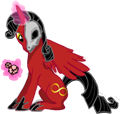One of the things I've been doing more and more now that the semester is winding down is pleasure reading. I bought and read the entirety of Kirkman's
The Walking Dead last weekend, began reading
How Few Remain and
Starship Troopers, and recently read what I could find of a manga called
The Legend of Koizumi.
The picture accompanying this post, minus the faux-motivational poster touches, is from the manga.
It's one of those uniquely Japanese kinds of stories, like
Hetalia: Axis Powers or
Sayonara Zetsubou Sensei, in that the premise is rather ridiculous and the execution both revels in and dramatizes the ridiculosity of the situation.
To give enough background to work with,
The Legend of Koizumi is a manga in which international disputes are settled by world leaders playing Mahjong. Former Prime Minister of Japan, Junichiro Koizumi, is the hero of the story and he plays against such Mahjong powerhouses as George W. Bush, George H.W. "Papa" Bush, Vladimir Putin, Pope Benedict XVI, and Adolf Hitler.
You might be wondering about the inclusion of Hitler. As it turns out, the Nazis relocated to the Moon after World War II. They established the Fourth Reich and Hitler got to work on improving his Mahjong level. It is during the events of the story that the Fourth Reich determines to invade the Earth, and they set up a Mahjong tournament against the greatest world leaders for this purpose.
The manga had already begun making light references to
Dragon Ball Z by this point, including scanners worn over the eye which could determine an individual's Mahjong level, but the third round of the tournament includes a reference that is both a clear and affectionate parody of a major plot element in
Dragon Ball Z and also a line of criticism against said element. Hitler, battling against Pope Benedict XVI, transforms into the "Legendary Super Aryan" -- that is, his hair turns gold and stands up on end in a somewhat ridiculous manner.
Compare, if you will, the Super Saiyans Son Goku and Vegeta with the Super Aryans Adolf Hitler and Tristan Goebbels.
There are, of course, obvious similarities between the characters from DBZ and those from
The Legend of Koizumi. The hair stands on end, changes to blond, and the transformation grants the commensurate increase in fighting strength.
The Super Aryans are clear enough parodies of the original Super Saiyans. The idea of the Super Aryans is to couple an increase in power with the traits of the Aryan Übermensch. Putting these traits on the villain allows for the villain to display overwhelming strength gained through persevering against the might of the protagonist, a direct inversion of the formula used in DBZ.
It is very likely that the creators of
The Legend of Koizumi wanted to poke fun at the Super Saiyan design. In DBZ, the field of protagonists whittles down to those of Saiyan ancestry, ending each major story arc with a pure-blooded Saiyan responsible for saving the world (or universe). The only time where a protagonist who is not a pure-blooded Saiyan saves the world, it is Gohan, who is half-Saiyan and is only able to do so as a direct result of his father's sacrifice (his father being Son Goku, a pure-blooded Saiyan).
And as the manga and show progress their storylines, the Saiyan protagonists spend more and more time in their Super Saiyan forms. They are more aggressive in this form, more powerful, and importantly, homogenized. No matter their normal eye or hair color, becoming a Super Saiyan means blue-green eyes and blond hair.
That the good guys of the DBZ narrative should be the sort of aggressive, strong, racially pure and homogeneous group that the Nazi party aspired for the people of Germany to be is probably exactly why the concept is mapped back onto the Nazis in
The Legend of Koizumi. The idea itself is silly, and the only way to fit the Nazis into the tone of the story is to make them silly by bringing them to equivalence with the Saiyans. I can't rightly say if the Saiyans as they are presented pose a problem with their similarity to certain aspects of Nazi myth and iconography, but I appreciate how
The Legend of Koizumi has sparked my mind into thinking about it.









No comments:
Post a Comment